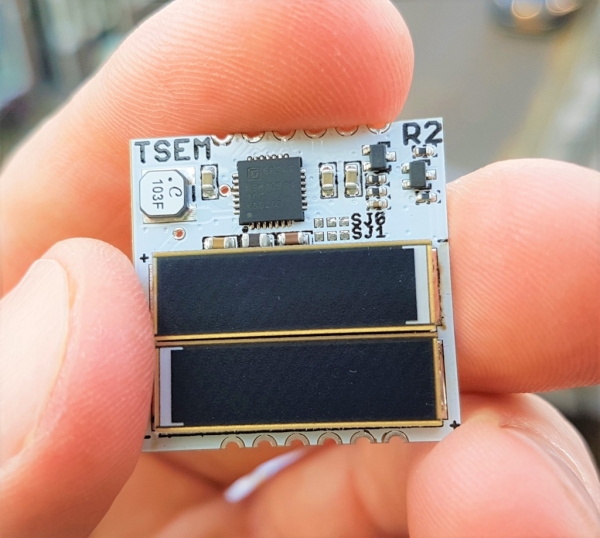Tiny Solar Energy Module (TSEM)
Description This is a 1×1 inch PCB module with two tiny solar cells, a highly efficient Li-Ion battery charger and with two regulated outputs (3.3V and 1.8V). It harvests enough power from indoor light to power a simple BLE or LoRa sensor. The board has castellated vias so it can be surface mount soldered onto […]
Tiny Solar Energy Module (TSEM) Read More »

